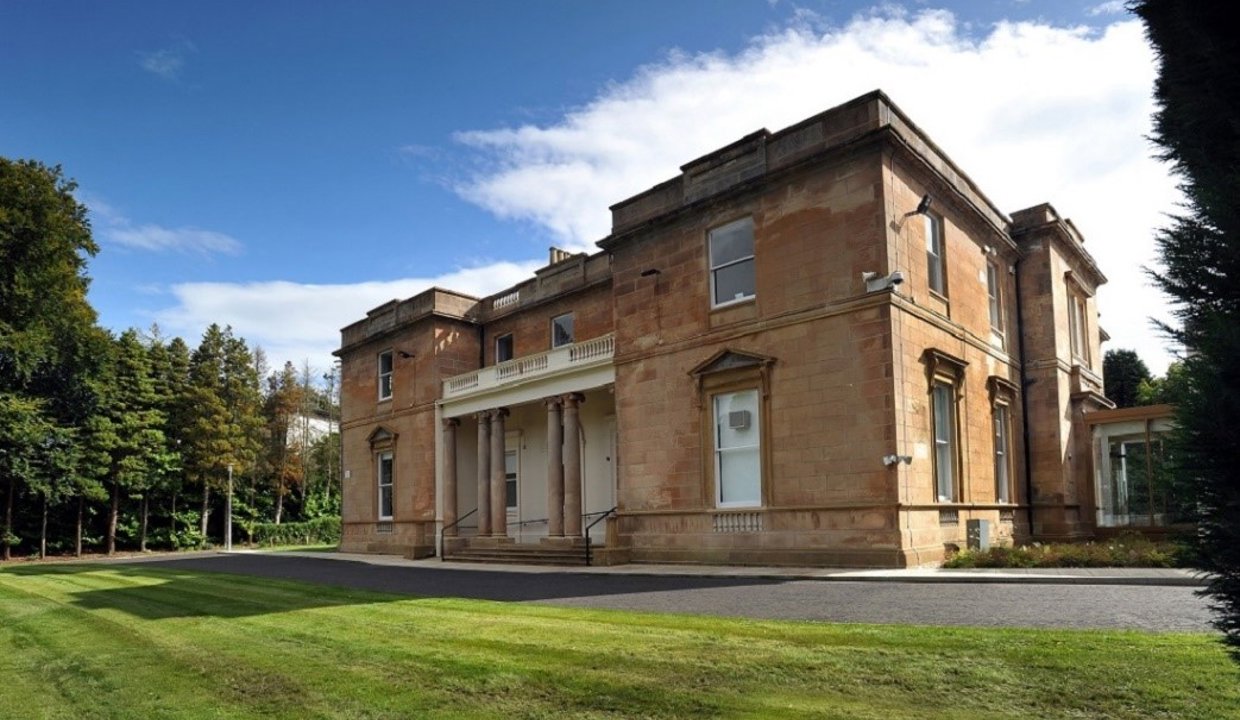Places to visit in East Dunbartonshire
East Dunbartonshire offers a unique blend of stunning natural and built attractions, evocative history, energising activities, fascinating culture and a range of places to shop, socialise and stay - all set against the stunning backdrop of the Campsie Fells.
Whether you're already a resident of East Dunbartonshire, interested in visiting or planning your trip, you can find a wealth of information below.
Check out the video below from Scotland Uncovered. Closed Captions are available.
Scotland Uncovered - Visit East Dunbartonshire video
Explore East Dunbartonshire
There's a terrific range of natural and built attractions in East Dunbartonshire.
Now that you've visit_ED it's time you explore_ED!
Explore, Enjoy East Dunbartonshire video
Mugdock Country Park
Mugdock Country Park is a beautiful place to experience, explore and enjoy with something for everyone - offering 270 hectares of woodland, moorland and heathland, connected by a network of paths.
For the latest information on events - including booking details - check Mugdock Park out on Facebook.
Take a walk to Mugdock Castle which overlooks Mugdock Loch, passing by Craigend Castle on the way, or stroll over Pietches Moor then through Pheasants Wood to take in the Toadstool Trail. If you visit Khyber Field then you’ll see the WWII gunsites. At the Courtyard, you can pop into the Visitor Centre, browse the Gift Shop, enjoy refreshments at one of the cafes or take a look round the gallery and garden centre.
Mugdock's history predates the Bronze Age and it has a bright future ahead.
Please note, video below has no commentary, but music playing throughout. Closed Captions available.
Mugdock Country Park - Visit ED video
The Antonine Wall
The Antonine Wall - once the north-western edge of the Roman Empire - wound its way through what is now East Dunbartonshire. It was built by 7,000 men from three legions - from around 142 AD - and stretched 37 miles, between the Clyde and the Forth.
The best examples of stone structures along the entire Antonine Wall can be seen within a modern housing development in Bearsden. You can still visit the exposed remains of a Roman bath-house and latrine block within the area of the fort’s annexe. The site is signed from Bearsden Cross on A810 and lies approximately 600m down Roman Road.
Nearby, within the grounds of New Kilpatrick Cemetery, Bearsden, are two visible sections of the stone base of the rampart of the Antonine Wall.
You can also enjoy a Roman-themed Granary Garden at Bearsden Baptist Church, which gives visitors space to sit and learn more about the past. To reach it, visitors can walk through woodland where a 'sound cloud' has been installed in the tree canopy - recreating the authentic sounds of a working Roman fort.
Peel Park in Kirkintilloch was the former site of a Roman fort on the Antonine Wall. Nothing now remains of the fort, but the park offers stunning views over the surrounding landscape, especially north to the Campsie Fells.
For more information on local Roman sights of interest, visit the Antonine Wall website.
Visit the Rediscovering the Antonine Wall website for more details of the project.
As part of that project, a comic was created celebrating the history of the Antonine Wall - involving schools including Twechar Primary. You can read the Antonine Wall comic online.
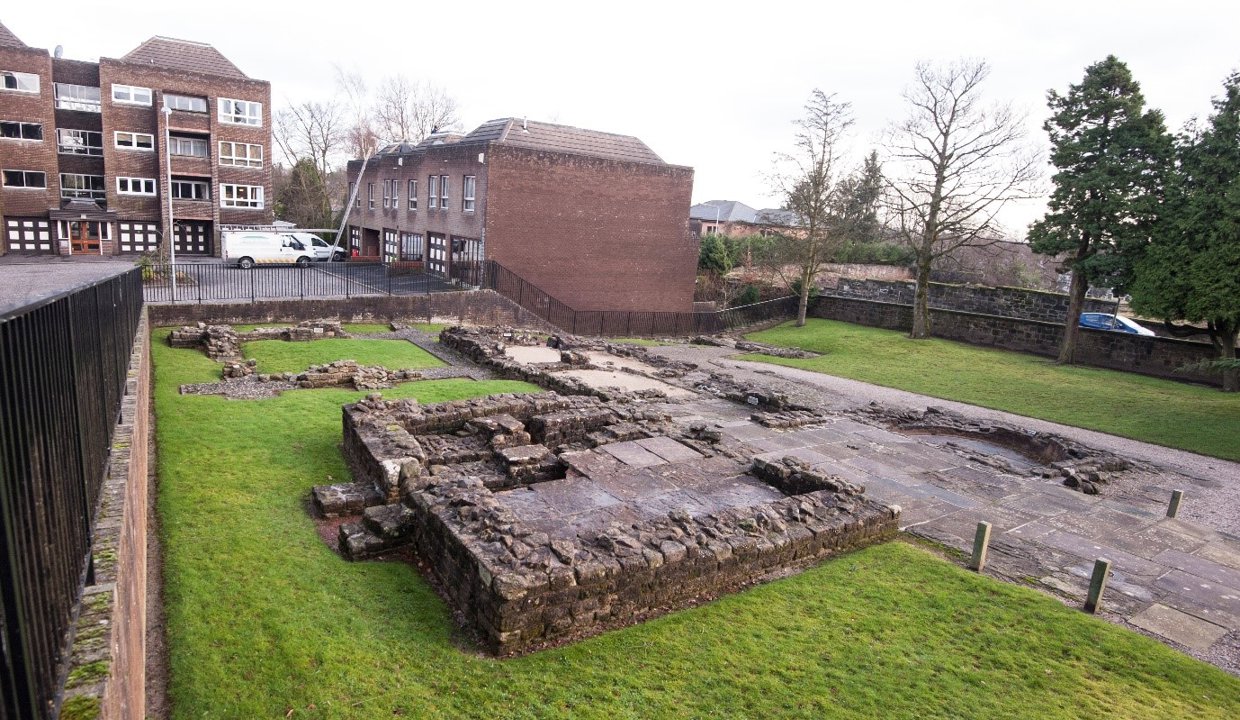
Bar Hill and Twechar
The highest of all the Antonine Wall forts, Bar Hill has spectacular views in all directions. The fort platform, east gate, and the remains of the headquarters building (principia) and bath-house are visible today.
Each legion was responsible for building sections of the wall and distance stones were created to mark their completion - highly-decorative markers commemorating the legion, recording the distance built and offering a dedication to the Emperor Antoninus Pius.
As part of the Rediscovering the Antonine Wall project, a replica of the historic Eastermains stone - found at Inchbelly Bridge, to the west of Twechar, in 1740 - is installed in the grounds of Twechar Healthy Living & Enterprise Centre, near the line of the wall. There are also interpretation plaques to illuminate its history.
Please note, video below has no commentary, but music playing throughout. Closed Captions available.
Bar Hill - East Dunbartonshire video
The Gruffalo Trail
Children can enjoy the magic of the Gruffalo story with the return of the much-loved trail at Kilmardinny Nature Reserve.
A collection of seven carved wooden characters from the iconic children’s book by Julia Donaldson have once more taken up residence in the park at Kilmardinny Loch near Bearsden. The characters also appear on a new carved wooden seat.
The Gruffalo Trail was first introduced in 2012 and became a popular attraction for children and the young-at-heart. The carvings were removed from the park in 2023 due to weather damage.
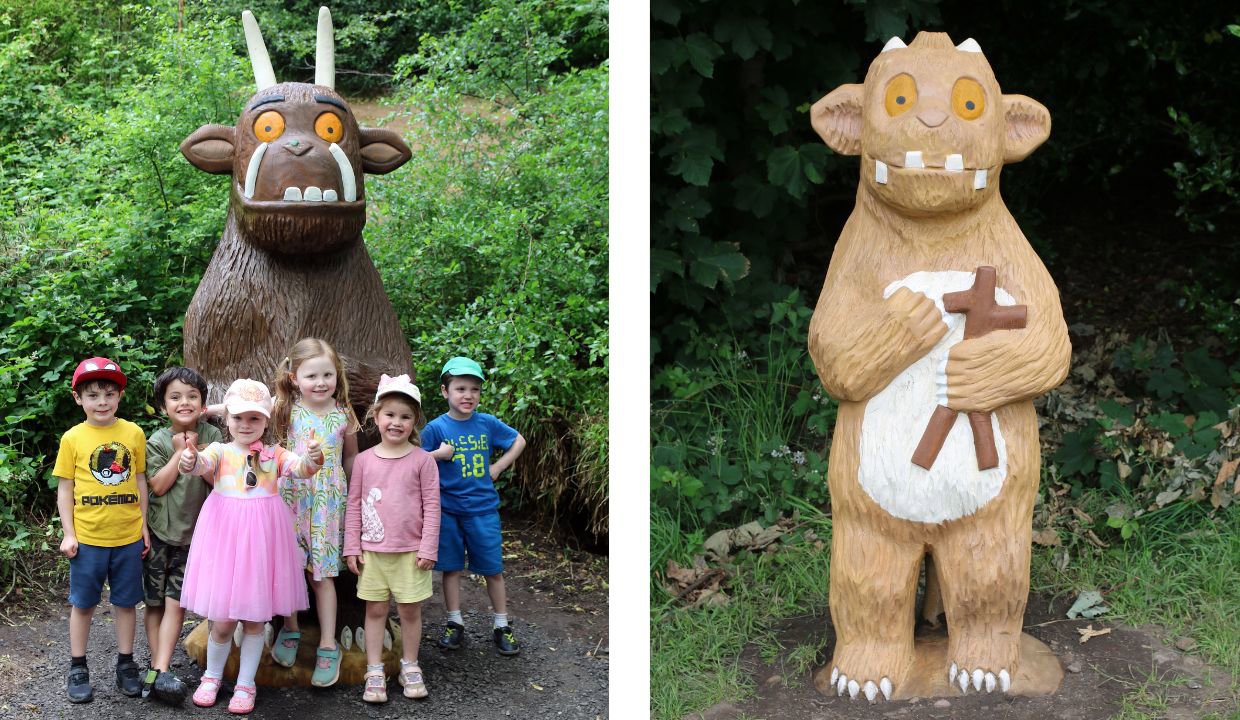
The reinstatement of the trail has been commissioned and installed by the Council’s Streetscene Technical Support team.
The Trail brings another element of enjoyment to this picturesque area by providing a wonderful, free activity for families.
The carvings include a large Gruffalo, Gruffalo’s Child, Little Brown Mouse, Fox, Owl, Snake and Frog.

Milton of Campsie Fairy Woods
If you go down to Milton of Campsie today you’re sure of a big surprise after a number of magical characters were spotted hiding out there.
Fantastic fairies, toad stools, fairy houses, and other woodland creatures can all be found in the Milton of Campsie Fairy Woods – which runs between Alder Road and Hazel Bank - after it was transformed into a magical world of make-believe and fun for all the family.
The wooden carvings are the work of Chainsaw Creations who has helped these fairytale characters come to life after being commissioned by the popular Walk, Run, Cycle East Dunbartonshire group - with help from East Dunbartonshire Council’s Streetscene Technical Support Team - to create a Fairy Trail.
Some of the fairies love the woods so much they have decided to set up home there with a number of fairy doors also seen dotted around the area.
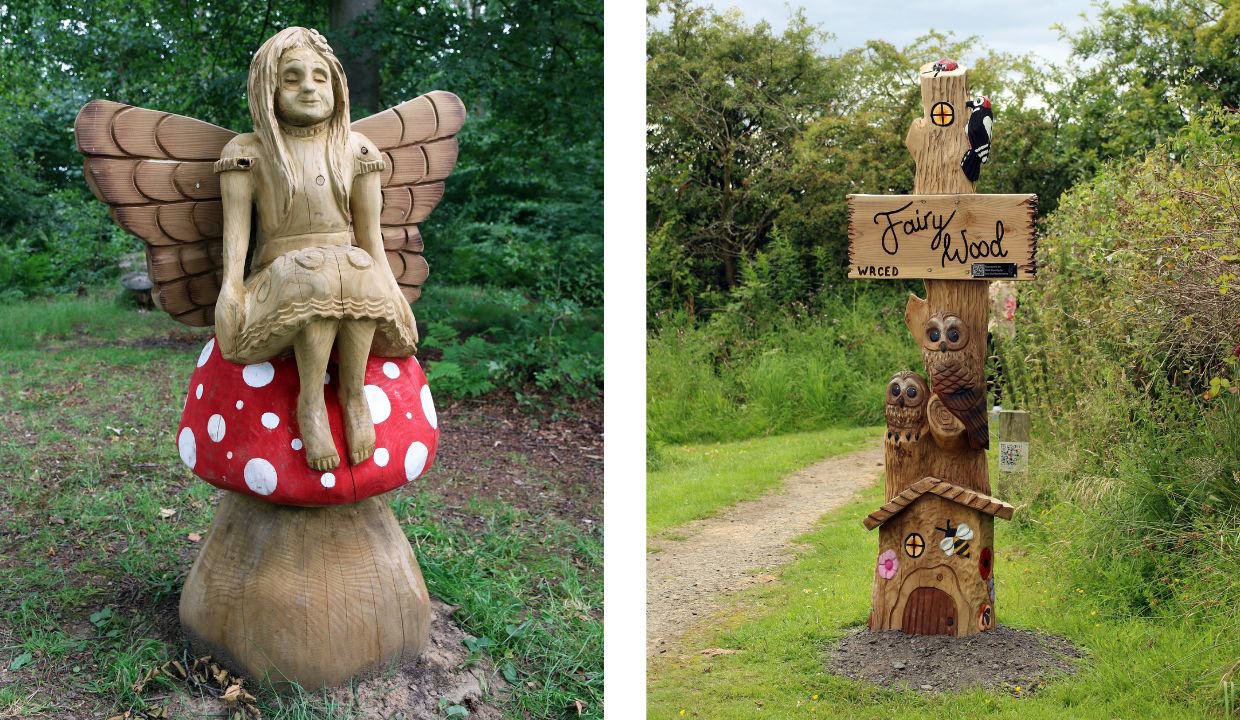
Lillie Art Gallery
The Lillie Art Gallery in Milngavie attracts thousands of visitors every year, offering a range of exhibitions, events and opportunities to engage and appreciate culture. For more information, visit the Lillie Art Gallery page on the EDLC website.
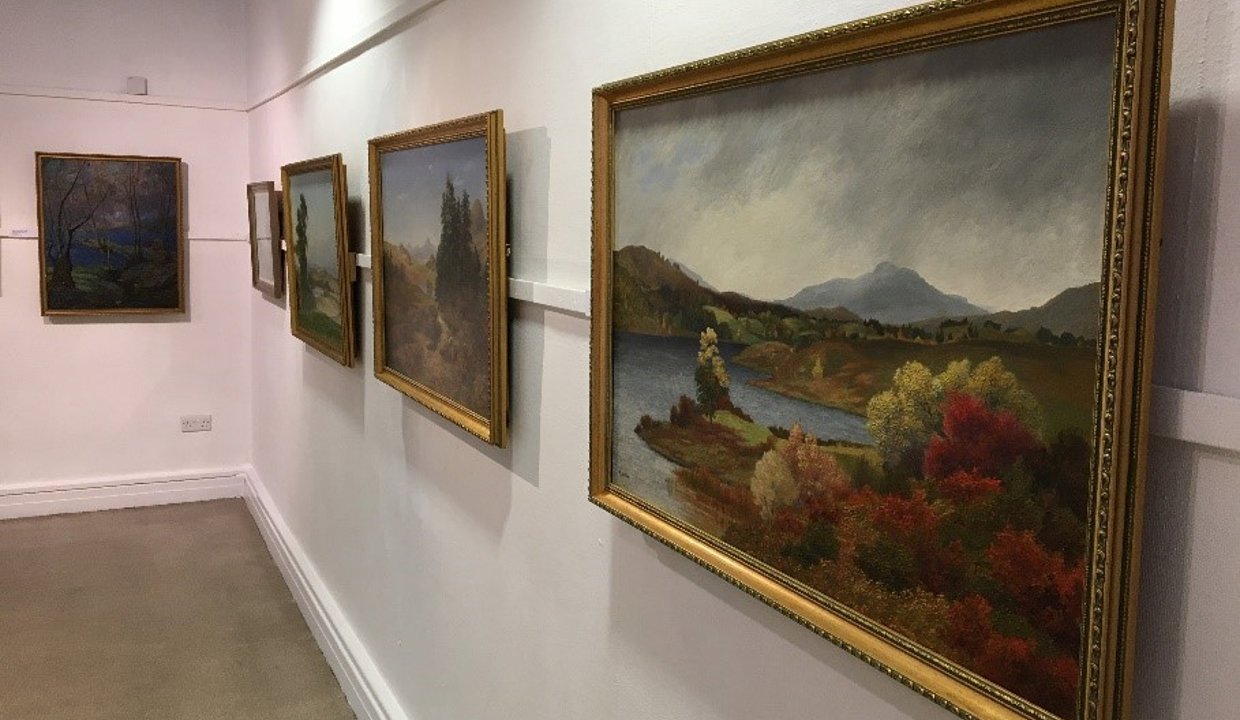
Auld Kirk Museum
The Auld Kirk and its graveyard are Grade-A listed and together form one of the finest and oldest sites in the town of Kirkintilloch. The Auld Kirk offers a diverse range of events and exhibitions, all year round. The museum houses a rich collection of objects of local, national and international significance, interpreted in an innovative, exciting and educational way for visitors of all ages and abilities.
It's located next to Peel Park, where you can visit the restored bandstand and fountain, both fine examples of products manufactured in Kirkintilloch by the renowned Lion Foundry. In addition, the War Memorial Gateway has been refurbished, park benches installed, footpaths renewed, and Roman and Mediaeval history explored through a series of linked interpretive panels. For Auld Kirk Museum opening times, visit the EDLC website.

Kirkintilloch Town Hall
Kirkintilloch Town Hall was built in 1906 and reopened in 2018 with the addition of modern function spaces as well as offices, a reception area and a new platform lift. Made in Kirkintilloch was an EDLC Trust project supported by the Heritage Lottery Fund, which created an Industrial Heritage Centre within the upper floor of the Town Hall.
The project set out to engage the local community with Kirkintilloch’s rich industrial heritage through the display and interpretation of museum and archive collections. Highlights include a display about Rita and Masataka Taketsuru - the 'Mother and Father of Japanese Whisky'. Rita (whose maiden name was Cowan) met her future husband in Kirkintilloch and travelled with him to Japan, where they laid the foundations for the Nikka Whisky empire.
You can also learn more about Kirkintilloch's world-famous foundries and the Puffers which once sailed up and down the Forth and Clyde Canal. Check out the EDLC website for Kirkintilloch Town Hall opening times.

Kilmardinny House
A-listed Kilmardinny House was rejuvenated by the Council in conjunction with EDLC Trust - undergoing major refurbishment - and now includes a Garden Pavilion extension, providing a modern, flexible space which can accommodate a range of activities and events.
As well as supporting a diverse range of local arts, culture and leisure services, the improvements have transformed Kilmardinny into a beautiful venue for weddings, performances and conferences. For the latest Kilmardinny House info, visit the EDLC website and check out Kilmardinny House on Facebook.
